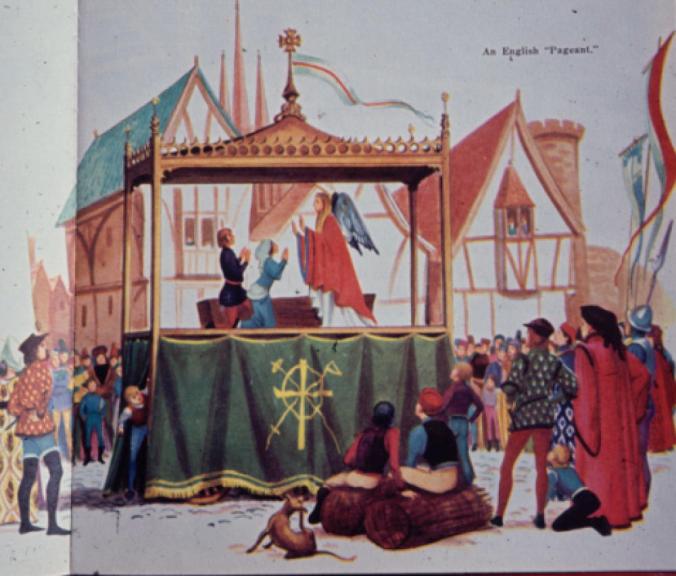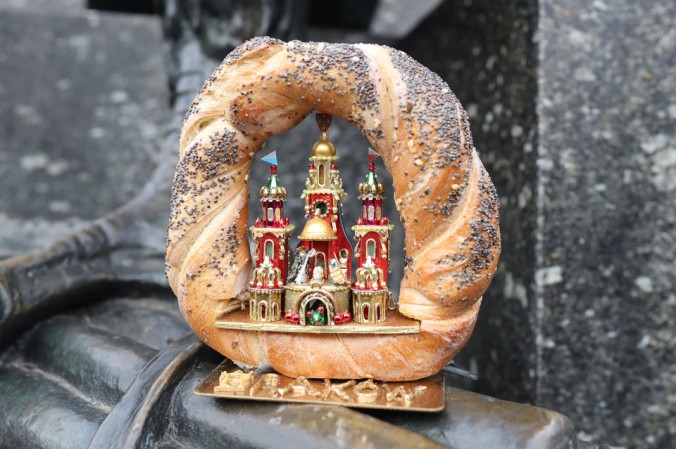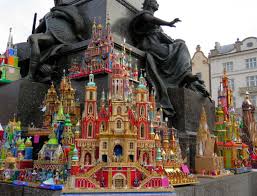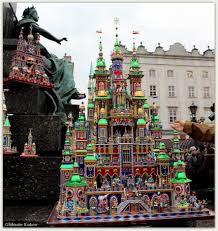One of Krakow’s favorite holiday traditions dating back to the Middle Ages is the creation of szopki or Christmas cribs. These unique lightweight structures resemble the historic castles, houses, or churches around Krakow in miniature. Other scenes inside a szopka depict historical and contemporary events and contain figurines illustrating elements of Polish culture, such as politicians, artists, the Pope or the Dragon of Wawel. The main materials to build the structure are wood or plywood. Smaller parts are made of cardboard and then are decorated with colorful tinfoil.

The 2018 winners of Krakow’s Szopka or Christmas Crib Competition were announced on December 9, 2018, after the noontime trumpet call from the towers of St. Mary’s:
Kryspin Wolny is the winner in the category of large cribs
Renata and Edward Markowscy in the category of a medium nativity
Wiesław Barczewski in the category of small cribs
Jan Kirsz is the creator of the most beautiful miniature crib.
(I will include photos of the winners when they are available.)
Every year on the first Thursday in December, the szopka creators place their splendid entrees on the steps of the monument to Adam Mickiewicz located in Krakow’s medieval town square. There, with the 800-year-old Cloth Hall and St. Mary’s in the background, thousands of visitors to the Christmas Market view the newest szopki. Following tradition, the artworks are again presented in a parade before announcing the winner. The szopki are then displayed in the Historical Museum of the City of Kraków.

Started in the 14th century, the szopka represented the birth of the Baby Jesus, with the calls of the angels, the homage of the shepherds, and the three gifts brought by the Magi. A gallery of other characters representing various regions or countries, occupations, and ethnic groups were often included to honor the holy infant.

Szopki for sale in 1934 in Krakow
The modern tradition began in 1937 but came to a stop during the German occupation. The event resumed in 1945 on the steps of the destroyed Adam Mickiewicz statue.
The origins of the szopka were likely from mystery plays performed at Christmas in the early 1200s when the Church organized processions. Other historians related the earliest szopki to the portable medieval altars and the evolution of its theatrical function when they appeared in the form of a mobile puppet show in the late 1600s.

In the past, the Christmas cribs were mostly the works of Krakow craftsmen (bricklayers and construction workers) during their idle weeks of the rain late autumn. In recent year, it is a passion of many Poles from all walks of life. Several families construct new creches every year.

This year’s competition is even more special. UNESCO placed the Krakow tradition of building szopka nativity scenes on the Representative List of the Intangible Cultural Heritage of Humanity. UNESCO recognized the szopka’s important educational functions, as it passes on knowledge about the history of the city, its architecture, and customs.
Some szopki are quite unique and don’t follow the traditional format. This one resembles the bread sold on Krakow’s streets.

Szopki can be purchased at the museum shop and in local stories throughout Krakow. We purchased this small szopka in a Warsaw gift shop selling items made in Poland. It sits in a place of honor on a table passed down from my Polish grandparents.

Krakow Szopki from past years:




Fabulous mini structures! Thx Donna! Most interesting!
Sent from my Sprint Samsung Galaxy S7.
LikeLike
I have the same one as the last one the says to place on table place of honor
LikeLike
What an amazing history! Thank you for sharing the beautiful pictures! It makes me want to go to Krakow for Christmas!
LikeLike